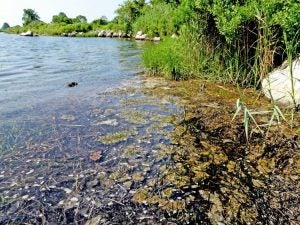
URI is embarking on a new study analyzing the relationship between groundwater and salt ponds. The study is meant to determine the type and amount of nutrients that groundwater transfers into salt ponds, and its impacts on the surrounding environment.URI is embarking on a new study analyzing the relationship between groundwater and salt ponds. The study is meant to determine the type and amount of nutrients that groundwater transfers into salt ponds, and its impacts on the surrounding environment.
For a time, researchers ignored the nutrient deposits form groundwater. They assumed groundwater was transferring such a small quantity that it was inconsequential to their research. Now, it is apparent that groundwater seeps into salt ponds at a much faster rate than expected, mainly due to the composition of the bottom of the pond.
The study will analyze the composition of groundwater from volunteer’s homes, and the water from salt ponds near their houses. “Septic systems are a large contributor of nutrients and bacteria, mostly nutrients, to the groundwater,” said Charlestown Wastewater Manager Matthew Dowling. The closer salt ponds are to densely populated areas, the higher the nutrient levels in and salt ponds there can be.
The study will begin in June and is expected to last for two years. Ultimately, the goal is to know exactly how much groundwater is reaching the salt ponds, and the impact that it could have on the ponds. The relationship between groundwater and salt pods is just one small part of a larger, even more dynamic environment.
